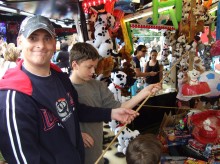 When you ask people what difficulties a person faces when trying to overcome heroin addiction, most will focus on the early withdrawal symptoms, which comprise both physical and psychological elements.
When you ask people what difficulties a person faces when trying to overcome heroin addiction, most will focus on the early withdrawal symptoms, which comprise both physical and psychological elements.
There are potentially far greater challenges that lie ahead in a journey to recovery from heroin addiction. It is important that people know this (users, family members, practitioners, etc), although it is also important that people with a heroin problem are not put off by these challenges. Many people have overcome heroin addiction.
One of my favourite pieces of addiction research focuses on the recovery journey from heroin addiction and I have described this research in the article section of this website. In the 1980s, Patrick Biernacki interviewed over 100 people in the USA who had overcome their heroin addiction without treatment. These were some of the major challenges these people faced:

 People with serious substance use problems lose a lot of the roles or personal characteristics that help define their normal identity (e.g. loving son, athlete, generosity, intelligence) as their dependence on their substance(s) increases, relationships wither and isolation increases. Eventually, their identity as viewed by others may become ‘a useless, dirty addict’. They will also have personal views of what they have become and these views can lead to lowered self-esteem or even intense hatred of oneself.
People with serious substance use problems lose a lot of the roles or personal characteristics that help define their normal identity (e.g. loving son, athlete, generosity, intelligence) as their dependence on their substance(s) increases, relationships wither and isolation increases. Eventually, their identity as viewed by others may become ‘a useless, dirty addict’. They will also have personal views of what they have become and these views can lead to lowered self-esteem or even intense hatred of oneself. I continue my series of blog posts on Patrick Biernacki’s research from the mid-1980s focused on natural recovery from heroin addiction.
I continue my series of blog posts on Patrick Biernacki’s research from the mid-1980s focused on natural recovery from heroin addiction. In
In  Many people believe that if you try heroin, then you are on the path to ruin. They consider that addiction to heroin is inevitable, and the route to being drug-free again is extremely difficult, if not impossible. In fact, the vast majority of people who try heroin do not become addicted to the drug [1].
Many people believe that if you try heroin, then you are on the path to ruin. They consider that addiction to heroin is inevitable, and the route to being drug-free again is extremely difficult, if not impossible. In fact, the vast majority of people who try heroin do not become addicted to the drug [1].
